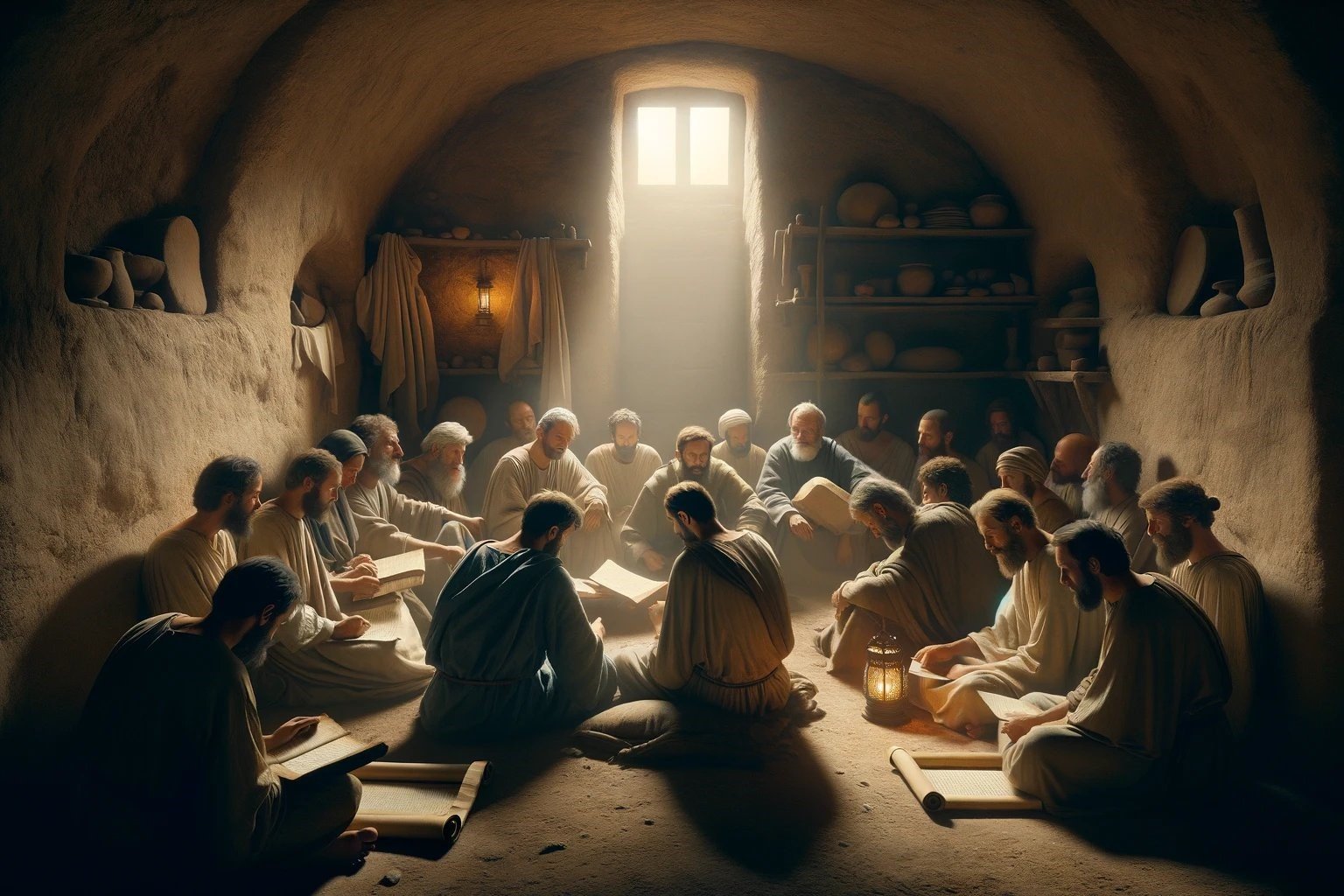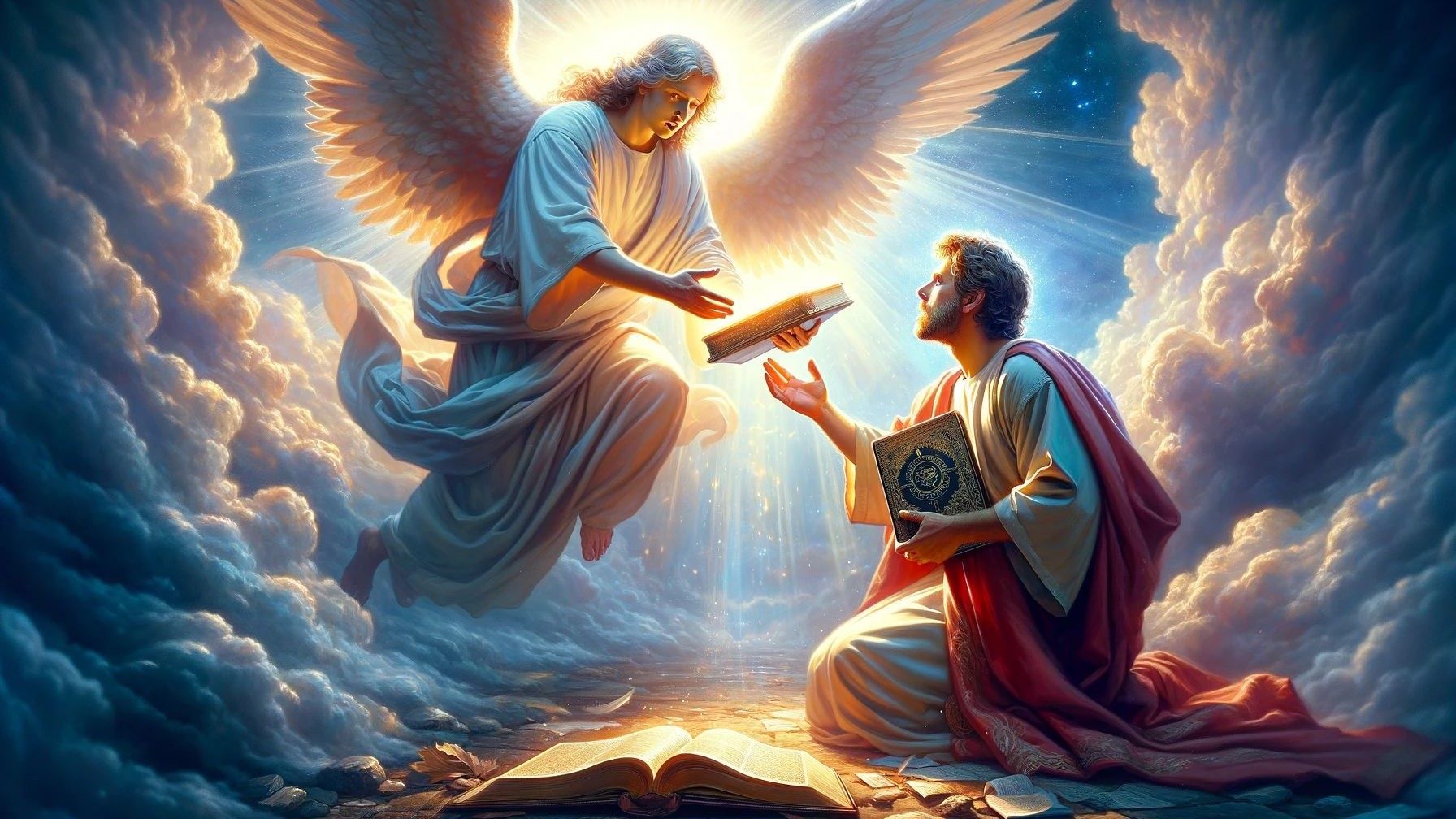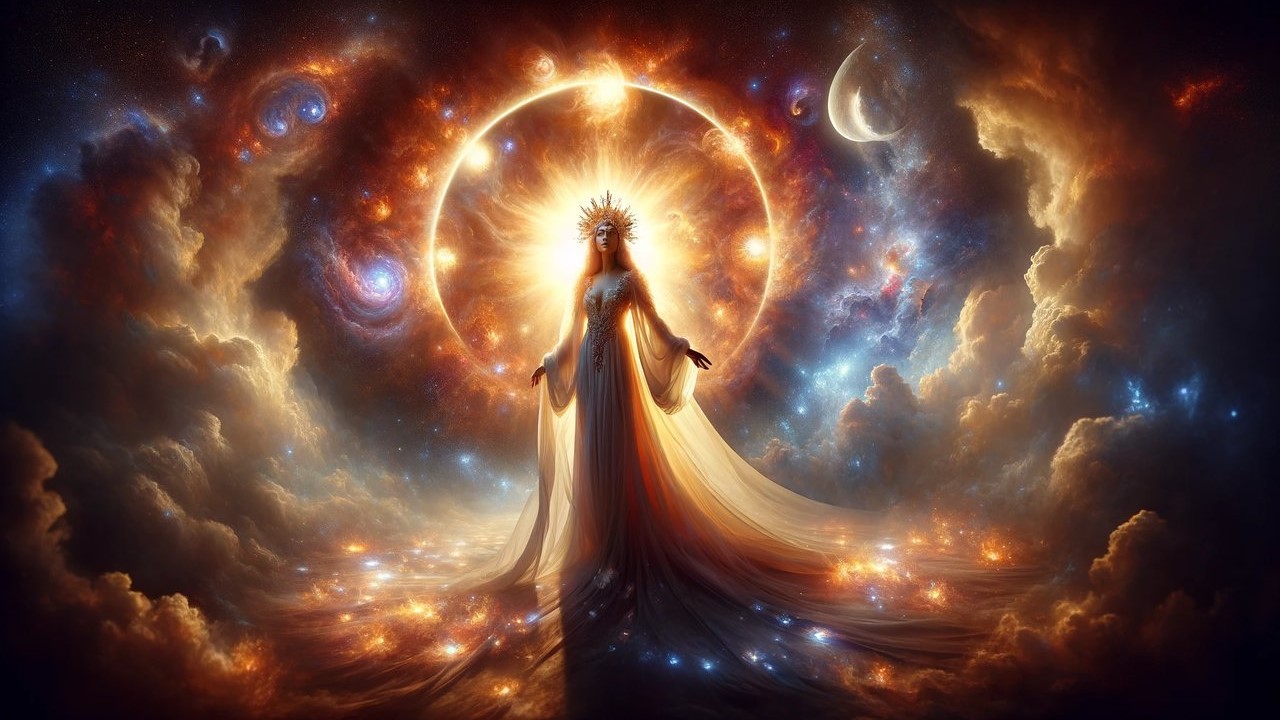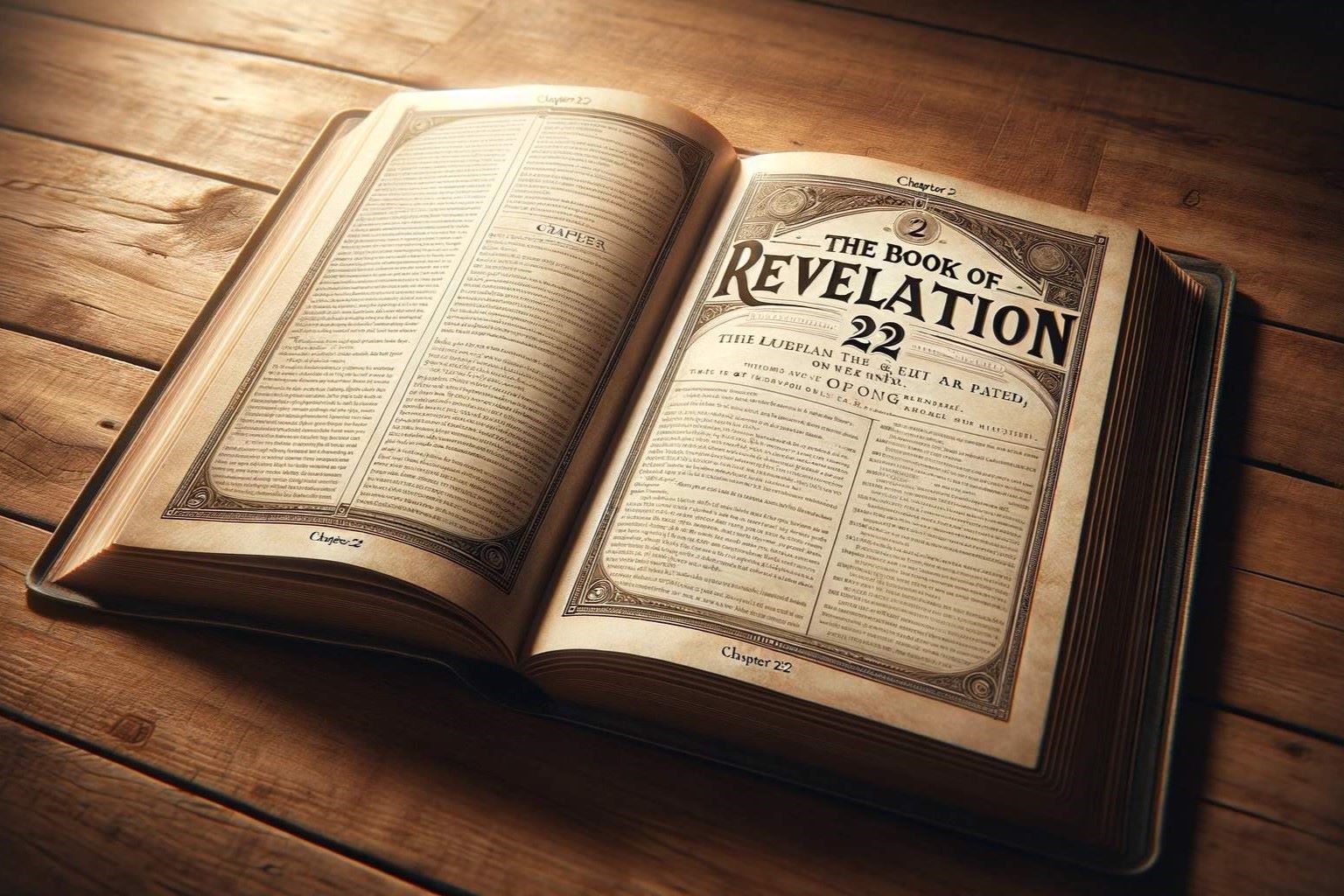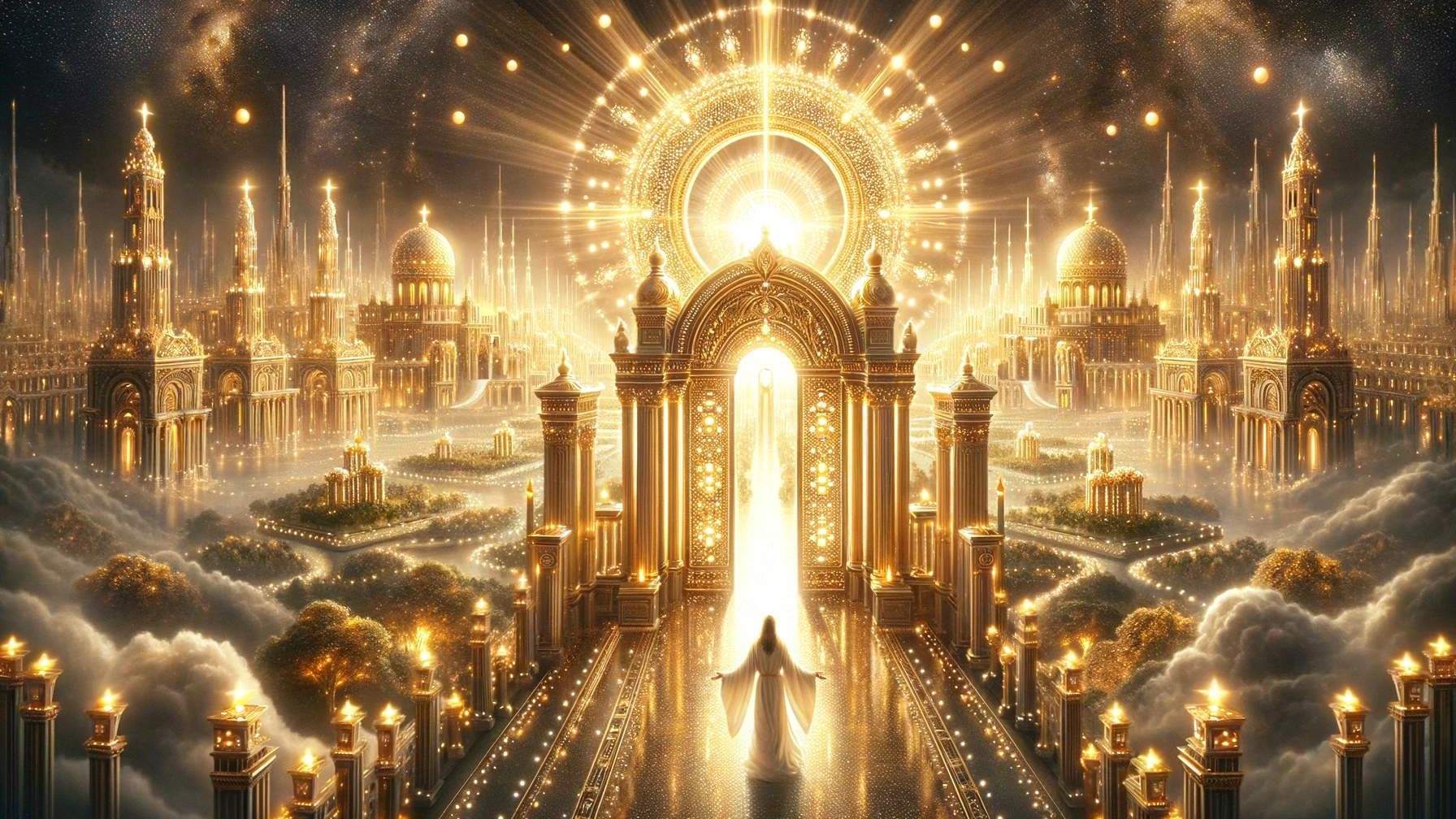Home>Bible Facts>The Vision Of Heaven In The Book Of Revelation And Its Connection To Marriage
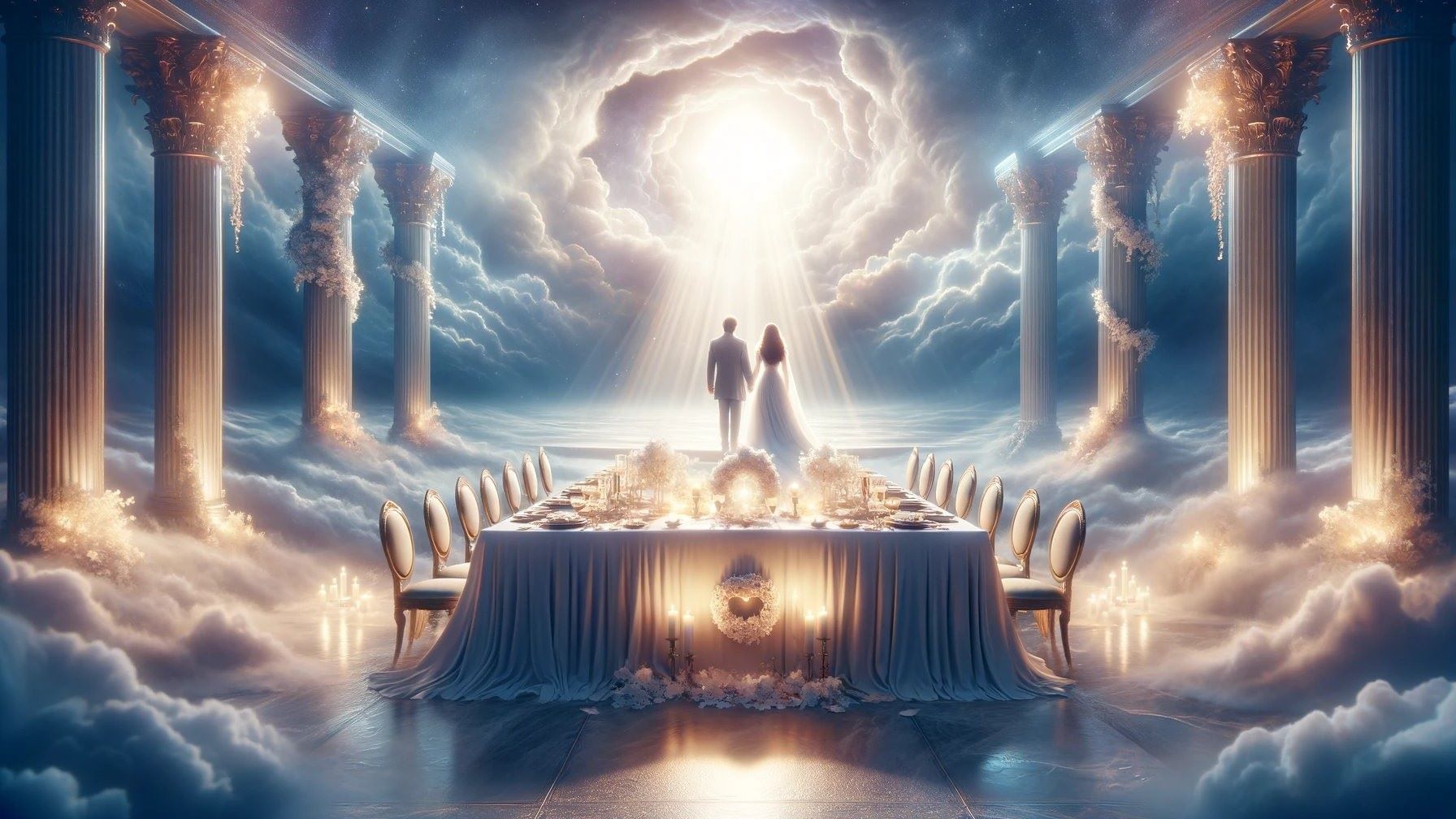

Bible Facts
The Vision Of Heaven In The Book Of Revelation And Its Connection To Marriage
Published: February 11, 2024
Jason DeRose, Managing Editor at Christian.net, uses his expertise in religion and journalism to deepen understanding of faith's societal impacts. His editorial leadership, coupled with a strong academic background, enriches the platform’s diverse content, earning him recognition in both journalism and religious circles.
Explore the profound connection between the vision of heaven in the Book of Revelation and the concept of marriage with these fascinating Bible facts. Uncover the spiritual significance and deeper understanding of this divine revelation.
(Many of the links in this article redirect to a specific reviewed product. Your purchase of these products through affiliate links helps to generate commission for Christian.net, at no extra cost. Learn more)
Table of Contents
Introduction
The Book of Revelation, the final book of the New Testament, is a profound and enigmatic text that has captivated readers for centuries. It is a rich tapestry of apocalyptic visions, vivid symbolism, and divine revelations that offer a glimpse into the ultimate fulfillment of God's plan for humanity. At the heart of this awe-inspiring narrative lies the vision of heaven, a celestial realm of unparalleled beauty and splendor. Within this vision, the concept of marriage emerges as a powerful and evocative symbol, serving as a metaphor for the profound union between Christ and his followers.
Throughout the Book of Revelation, marriage is employed as a potent symbol to convey profound spiritual truths. This symbolism is deeply rooted in the biblical understanding of marriage as a sacred covenant, reflecting the intimate and unbreakable bond between God and his people. As such, the imagery of marriage in the Book of Revelation serves to illuminate the profound depth of the relationship between Christ and the church, portraying it as a union of unparalleled significance and eternal significance.
In this article, we will embark on a journey through the intricate tapestry of symbolism woven throughout the Book of Revelation, exploring the profound significance of the heavenly vision and its connection to the concept of marriage. We will delve into the imagery of the heavenly wedding feast, the portrayal of the church as the bride of Christ, and the breathtaking depiction of the New Jerusalem as the radiant bride. Through this exploration, we will gain a deeper understanding of the profound spiritual truths encapsulated within the symbolism of marriage in the Book of Revelation, illuminating the timeless significance of this visionary text.
The Symbolism of Marriage in the Book of Revelation
The Book of Revelation employs the symbolism of marriage to convey profound spiritual truths and illuminate the intimate relationship between Christ and his followers. At its core, marriage is depicted as a sacred covenant, symbolizing the unbreakable bond between God and his people. This symbolism is deeply rooted in the biblical understanding of marriage as a union of profound significance, reflecting the divine love, faithfulness, and unity that characterize the relationship between Christ and the church.
Throughout the Book of Revelation, the imagery of marriage serves as a powerful metaphor for the ultimate union between Christ and his followers. It portrays the church as the bride of Christ, emphasizing the deep spiritual intimacy and unbreakable bond between the two. This imagery underscores the profound love and devotion that define the relationship between Christ and the church, portraying it as a union of unparalleled significance and eternal significance.
Moreover, the symbolism of marriage in the Book of Revelation extends beyond the portrayal of the church as the bride of Christ. It also encompasses the breathtaking vision of the heavenly wedding feast, a celestial celebration of unparalleled joy and splendor. This visionary depiction underscores the ultimate fulfillment of God's redemptive plan, portraying the union between Christ and his followers as a joyous and triumphant event of cosmic significance.
Furthermore, the symbolism of marriage in the Book of Revelation finds its culmination in the awe-inspiring portrayal of the New Jerusalem as the radiant bride. This majestic imagery conveys the profound beauty and splendor of the heavenly realm, depicting it as a place of unparalleled glory and perfection. The portrayal of the New Jerusalem as the radiant bride underscores the ultimate consummation of God's divine plan, portraying the union between Christ and his followers as a transcendent and eternal reality of breathtaking beauty and significance.
In essence, the symbolism of marriage in the Book of Revelation serves as a poignant and evocative portrayal of the profound union between Christ and the church. It illuminates the timeless significance of this visionary text, offering a glimpse into the ultimate fulfillment of God's redemptive plan and the eternal joy and glory that await his faithful followers.
The Heavenly Wedding Feast
The imagery of the heavenly wedding feast in the Book of Revelation is a captivating portrayal of the ultimate union between Christ and his followers. It unfolds as a celestial celebration of unparalleled joy and splendor, symbolizing the consummation of God's redemptive plan and the triumphant union between the bridegroom, Christ, and his beloved bride, the church.
The concept of a wedding feast holds profound significance in biblical and cultural contexts. It represents a joyous and festive occasion, a time of celebration and unity. In the Book of Revelation, the heavenly wedding feast serves as a powerful symbol of the ultimate fulfillment of God's divine plan, portraying the union between Christ and his followers as a joyous and triumphant event of cosmic significance.
The imagery of the heavenly wedding feast is intricately woven into the apocalyptic visions of Revelation, depicting a scene of unparalleled grandeur and divine splendor. It conveys the sense of anticipation and joy as the bridegroom, Christ, is united with his beloved bride, the church, in a celestial union that transcends earthly bounds. This visionary depiction encapsulates the profound love and devotion that define the relationship between Christ and the church, portraying it as a union of unparalleled significance and eternal joy.
Furthermore, the heavenly wedding feast serves as a poignant reminder of the ultimate hope and redemption that await believers. It symbolizes the culmination of God's redemptive plan, portraying the union between Christ and his followers as a joyous and triumphant event that heralds the dawn of a new era. This celestial celebration embodies the promise of eternal joy and fulfillment, offering a glimpse into the glorious destiny that awaits those who remain faithful to the bridegroom, Christ.
In essence, the imagery of the heavenly wedding feast in the Book of Revelation serves as a powerful testament to the profound union between Christ and the church. It conveys the ultimate fulfillment of God's redemptive plan, portraying the union between Christ and his followers as a joyous and triumphant event of cosmic significance. This visionary depiction offers believers a glimpse into the eternal joy and glory that await them in the celestial realm, underscoring the timeless significance of the heavenly wedding feast as a symbol of hope, redemption, and divine union.
The Bride of Christ
The concept of the church as the bride of Christ is a central and evocative theme in the Book of Revelation, symbolizing the deep spiritual intimacy and unbreakable bond between Christ and his followers. This powerful imagery portrays the church as the beloved bride of the divine bridegroom, Christ, emphasizing the profound love, devotion, and unity that define the relationship between the two.
The portrayal of the church as the bride of Christ is deeply rooted in the biblical understanding of marriage as a sacred covenant, reflecting the intimate and unbreakable bond between God and his people. This imagery underscores the profound depth of the relationship between Christ and the church, portraying it as a union of unparalleled significance and eternal joy.
Throughout the Book of Revelation, the symbolism of the bride of Christ is intricately woven into the apocalyptic visions, conveying the sense of divine love and devotion that characterize the relationship between Christ and his followers. It symbolizes the ultimate union between the bridegroom, Christ, and his beloved bride, the church, as a joyous and triumphant event of cosmic significance.
Moreover, the imagery of the bride of Christ serves as a poignant reminder of the profound spiritual intimacy and unity that believers share with Christ. It embodies the promise of eternal joy and fulfillment, offering a glimpse into the glorious destiny that awaits those who remain faithful to the divine bridegroom, Christ.
In essence, the portrayal of the church as the bride of Christ in the Book of Revelation serves as a powerful testament to the profound union between Christ and his followers. It illuminates the timeless significance of this visionary text, offering a glimpse into the ultimate fulfillment of God's redemptive plan and the eternal joy and glory that await his faithful followers in the celestial realm.
The New Jerusalem as the Bride
The imagery of the New Jerusalem as the radiant bride in the Book of Revelation is a breathtaking portrayal of the ultimate union between Christ and his followers. This awe-inspiring depiction unfolds as a testament to the profound beauty, splendor, and perfection of the heavenly realm, symbolizing the consummation of God's redemptive plan and the transcendent reality of the union between the bridegroom, Christ, and his beloved bride, the church.
The New Jerusalem stands as a majestic symbol of divine fulfillment and eternal glory, representing the ultimate dwelling place of God and his faithful followers. Its portrayal as the radiant bride encapsulates the profound beauty and perfection of the celestial realm, conveying a sense of awe and wonder at the splendor that awaits believers in the presence of the Almighty.
The imagery of the New Jerusalem as the radiant bride is intricately woven into the apocalyptic visions of Revelation, depicting a city of unparalleled grandeur and divine splendor. It conveys the sense of anticipation and joy as the bridegroom, Christ, is united with his beloved bride, the church, in a celestial union that transcends earthly bounds. This visionary depiction serves as a poignant reminder of the ultimate hope and redemption that await believers, offering a glimpse into the glorious destiny that awaits those who remain faithful to the bridegroom, Christ.
Furthermore, the portrayal of the New Jerusalem as the radiant bride embodies the promise of eternal joy and fulfillment, underscoring the timeless significance of the heavenly realm as a place of unparalleled beauty and perfection. It symbolizes the ultimate consummation of God's divine plan, portraying the union between Christ and his followers as a transcendent and eternal reality of breathtaking beauty and significance.
In essence, the imagery of the New Jerusalem as the radiant bride in the Book of Revelation serves as a powerful testament to the profound union between Christ and the church. It conveys the ultimate fulfillment of God's redemptive plan, offering believers a glimpse into the eternal joy and glory that await them in the celestial realm. This visionary depiction illuminates the timeless significance of the New Jerusalem as a symbol of hope, redemption, and divine union, underscoring the profound beauty and splendor of the heavenly dwelling place prepared for the faithful followers of the bridegroom, Christ.
Read more: What Is Babylon In The Book Of Revelation
Conclusion
The symbolism of marriage in the Book of Revelation offers a profound and captivating portrayal of the ultimate union between Christ and his followers. Throughout this visionary text, the imagery of marriage serves as a powerful metaphor for the intimate and unbreakable bond between the bridegroom, Christ, and his beloved bride, the church. It illuminates the timeless significance of this celestial union, offering believers a glimpse into the eternal joy and glory that await them in the heavenly realm.
The concept of the heavenly wedding feast stands as a testament to the ultimate fulfillment of God's redemptive plan, portraying the union between Christ and his followers as a joyous and triumphant event of cosmic significance. This celestial celebration embodies the promise of eternal joy and fulfillment, offering believers a glimpse into the glorious destiny that awaits those who remain faithful to the bridegroom, Christ.
Furthermore, the portrayal of the church as the bride of Christ underscores the profound love, devotion, and unity that define the relationship between the two. It symbolizes the ultimate union between the bridegroom, Christ, and his beloved bride, the church, as a joyous and triumphant event of cosmic significance. This imagery serves as a poignant reminder of the profound spiritual intimacy and unity that believers share with Christ, offering a glimpse into the glorious destiny that awaits those who remain faithful to the divine bridegroom.
The awe-inspiring depiction of the New Jerusalem as the radiant bride encapsulates the profound beauty, splendor, and perfection of the heavenly realm, symbolizing the consummation of God's redemptive plan and the transcendent reality of the union between the bridegroom, Christ, and his beloved bride, the church. This visionary portrayal serves as a powerful testament to the profound union between Christ and the church, offering believers a glimpse into the eternal joy and glory that await them in the celestial realm.
In essence, the symbolism of marriage in the Book of Revelation offers a profound and evocative portrayal of the ultimate union between Christ and his followers. It conveys the ultimate fulfillment of God's redemptive plan, illuminating the timeless significance of the heavenly vision and the eternal joy and glory that await his faithful followers.
